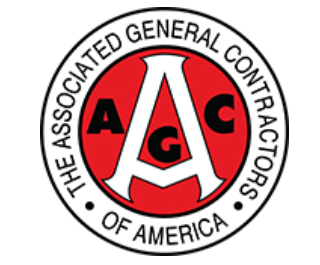 ACG of America reports in its latest Data DIGest weekly summary of economic news that state construction employment gains are on the rise.
ACG of America reports in its latest Data DIGest weekly summary of economic news that state construction employment gains are on the rise.
Seasonally adjusted construction employment rose in 43 states and the District of Columbia year-over-year (y/y) from June 2017 to June 2018, declined in six states and was unchanged in Hawaii, an AGC analysis of Bureau of Labor Statistics data released on Friday showed. Texas added the most construction jobs during the past year (42,900 jobs, 6.0%), followed by California (39,800, 4.9%), Florida (29,300, 5.8%), Georgia (16,100, 8.8%), Arizona (14,800, 10.2%) and Michigan (13,200, 8.1%). Arizona, Georgia and Michigan added the highest percentages of new construction jobs during the past year, followed by Nevada (7.6%, 6,400 jobs) and Oregon (7.5%, 7,300). Construction employment set a new high in Louisiana, Massachusetts, New York and Texas.
Of the six states that shed construction jobs between June 2017 and June 2018, New Jersey lost the most (-4,800 jobs, -3.1%), followed by South Carolina (-4,000, -3.9%) and Missouri (-1,900, -1.5%). The largest percentage loss occurred in South Carolina, followed by New Jersey, Missouri, Kentucky (-0.5%, -400 jobs), Oklahoma (-0.4%, -300) and North Dakota (-0.4%, -100).
For the month, employment rose in 32 states and D.C, declined in 13 states and was flat in five. New York added the most jobs for the month (3,700, 0.9%), followed by Arizona (3,100, 2.0%). North Dakota again had the largest percentage gain for the month (3.7%, 900), followed by Arizona. California lost the most construction jobs in June (-2,900, -0.3%), followed by Ohio (-2,600, -1.2%), Washington (-2,200, -1.1%), Pennsylvania (1,900, -0.7%) and South Carolina (-1,600, -1.6%). West Virginia lost the highest percentage of construction jobs for the month (-2.1%, -700), followed by South Carolina and Ohio. (AGC’s rankings are based on seasonally adjusted data, which in D.C., Hawaii and five other states is available only for construction, mining and logging combined.)
The value of new construction starts in June increased 11% from May at a seasonally adjusted annual rate, construction data provider Dodge Data & Analytics reported today. “Boosting activity in June was a sharp 57% advance for nonresidential building, which benefitted from the start of two massive manufacturing plant projects and two massive office building projects. The two large manufacturing projects were a $6.5 billion uranium processing facility in Oak Ridge, Tennessee, and a $1.7 billion petrochemical plant in Port Arthur, Texas, while the two large office projects were the $1.8 billion Spiral office tower in New York [City] and a $665 million office tower in Chicago.
“Residential building in June grew 4%, helped by growth for multifamily housing. The nonbuilding construction sector (public works and electric utilities) retreated 28% in June, pulling back after the sharp 37% increase reported in May that reflected the start of several large natural-gas pipelines and rail-related projects. Through the first six months of 2018, total construction starts on an unadjusted basis were…up 1% from the same period a year ago. If the volatile electric utility/gas plant category is excluded, total construction starts during the first six months of 2018 would be up 3% relative to last year.”
“Dodge Chief Economist Robert Murray commented, ‘Although the construction industry is facing increased headwinds during 2018, namely higher material prices and rising interest rates, these have yet to have a discernible negative impact on the broad level of construction starts. On the plus side, the construction industry is benefitting currently from the tailwinds of a strong economy, some easing of bank lending standards, and greater funding for federal public works programs as the result of the omnibus appropriations legislation passed in March.'”
The American Institute of Architects on Friday released its semiannual “consensus” construction forecast. The median of the seven individual forecasts for nonresidential building construction spending is for growth of 4.7% in 2018 (without adjusting for inflation) and 4.0% in 2019, following a 2.2% gain in 2017. The panel expects growth rates in 2018 to range from 4% to 8% for most building categories, including both institutional (education, healthcare, amusement/recreation, public safety and religious) and commercial/industrial (office, retail and other commercial, hotel and industrial) segments. The consensus for 2019 is that growth will cluster even more tightly, between 3% and 6% for all but one segment.
The Construction Labor Research Council’s latest Settlements Report states, “The first year of new settlements agreed upon from January-June 2018 for union crafts in the construction industry…had an average increase of 3.0%[. The] average increase for the first year of settlements has slowly and steadily risen by over 1% since 2010/11 (from 1.7% in 2010….The current average increase is still below the rates during the 2006-2008 timeframe, which were well over 4.0%.” Second- and third-year increases signed so far in 2018 both averaged 2.8%. Increases for all three years average 0.1 percentage point more than in 2017. Among 11 crafts with contracts analyzed for 2018, average first-year increases ranged from 4.0% for insulators down to 2.1% for boilermakers.
“Construction costs increased for the 21st straight month in July,” consultancy IHS Markit and the Procurement Executives Group (PEG) reported today. Price in[dex]es for materials and equipment were…higher in eight of the 12 categories, though all 12 were above the neutral threshold of 50….’Steel prices in the U.S. are at or near peak levels. What little relief is on the way will come later this year,’ said John Anton, director, pricing and purchasing, IHS Markit. ‘Pipe and tube prices have not peaked, but will climb through the rest of the year. If you buy from Brazil, Argentina or South Korea, you may need to find additional suppliers; supply shortages are ongoing in rebar, angles, pipe, and tube.” The current subcontractor labor index expanded at a faster rate this month compared to last” and increased for the 12th straight month.







